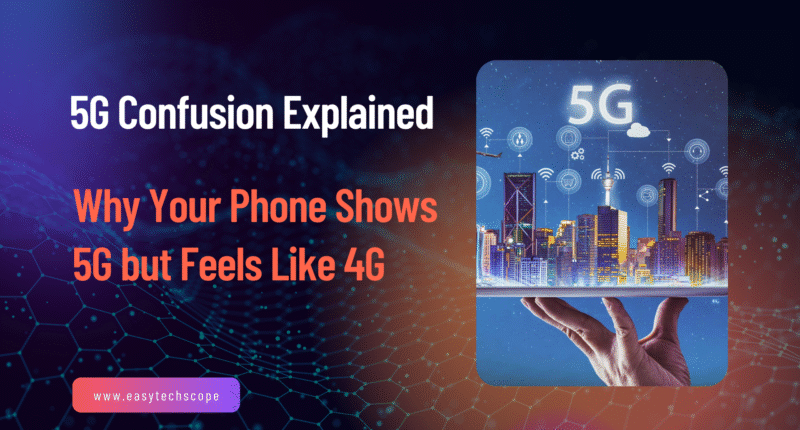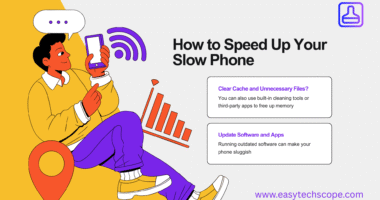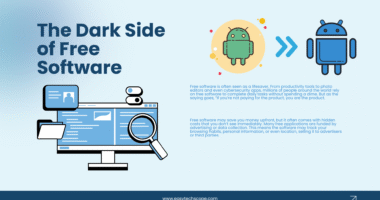Understanding 5G Technology
The rollout of 5G technology heralds a new era in mobile communications, boasting higher speeds, lower latency, and improved connectivity. It is essential to grasp what 5G entails to understand why your device may not meet your speed expectations. Unlike its predecessors, 5G operates on multiple frequency bands, each offering distinct advantages and capabilities.
5G aims to enhance various applications, from streaming high-definition videos to enabling a more connected environment for IoT devices. Yet, despite the promised benefits, many users find that their experience feels far below the speed and performance that 5G should ideally provide.
The Different Types of 5G
To understand the confusion behind 5G performance, one must comprehend its various incarnations. There are three primary types of 5G networks:
- Low-Band 5G: This type operates on frequencies below 1 GHz. While it provides extensive coverage and better penetration through buildings, its speeds are only marginally better than 4G LTE.
- Mid-Band 5G: Mid-band frequencies offer a balance between speed and coverage. Typical speeds range from 100 Mbps to 900 Mbps, making it a popular choice for urban areas. However, its coverage is less extensive than low-band 5G.
- High-Band 5G (mmWave): Also known as millimeter-wave 5G, this type provides lightning-fast speeds, often exceeding 1 Gbps. Nevertheless, it suffers from limited range and difficulty penetrating walls, making it suitable primarily for dense urban environments.
Your phone may display a 5G logo, but the experience vastly depends on which type of 5G network you are connected to.
Factors Affecting Your 5G Experience
Several factors contribute to how 5G connectivity feels on your device. It’s not just the type of 5G network; other elements also influence performance significantly:
- Network Congestion: Similar to traffic jams, if too many users are connected to the same 5G tower, speeds can plummet. Network congestion is often the primary culprit for sluggish performance.
- Environmental Interference: Physical obstacles like buildings, trees, and other structures can interfere with the 5G signal. High-band 5G, in particular, is known to be more susceptible to such disruptions.
- Weather Conditions: Extreme weather can adversely impact 5G performance. Heavy rain, storms, or snow can scatter and absorb signals, causing a drop in speed.
Understanding these factors can help pave the way for a better understanding of why your 5G feels comparable to 4G.
Network Coverage Variability
The coverage map displayed by service providers can be deceiving. Just because a region is labeled as having 5G doesn’t guarantee uniform performance. Coverage can vary significantly even within small areas. In metropolitan regions, you might experience consistent high-band 5G speed. However, as you move even a short distance away from the coverage area, the experience may shift to mid-band or low-band speeds.
Moreover, 5G is often more concentrated in urban centers, leaving rural areas with sporadic or even nonexistent service. If the network is transitioning or expanding, users in these emerging regions may experience less reliable speeds even when connected to 5G.
Device Limitations
Your device also plays a pivotal role in determining your 5G experience. Not all smartphones are built equal when it comes to supporting the diverse spectrum of 5G networks. Older models may not effectively utilize the latest network types, resulting in a less-than-optimal experience.
Many devices marketed as “5G-capable” may primarily support low-band or mid-band networks, which can ultimately affect speed. Additionally, the antenna design and software optimizations can also influence how well your device can connect to and leverage 5G networks.
Ensure that your smartphone has the latest updates installed and is equipped to handle the specific 5G frequencies offered by your service provider.
Misleading 5G Indicators
The presence of a 5G indicator on your phone’s status bar might create a false sense of connectivity. In some cases, devices may label a low-band or even an inadequately performing mid-band connection as “5G”. This can lead to considerable disappointment when users expect high speeds associated with premium 5G experiences.
The inconsistency in network performance can arise from how different manufacturers and systems define “5G.” Make sure you understand what type of 5G your device is actually utilizing and whether it lives up to its branding.
Tips for Improving Your 5G Experience
While some factors may be out of your control, there are measures you can take to potentially enhance your 5G experience:
- Stay Informed on Coverage: Familiarize yourself with your provider’s coverage map and seek areas known for better signal strength, especially if you live or work in areas with mixed 5G coverage.
- Ensure Your Device is Up-to-Date: Regularly check for any software updates, as manufacturers may optimize connection capabilities with newer releases.
- Use Wi-Fi When Available: If your mobile data feels sluggish, switching to a reliable Wi-Fi connection can often yield better results for high-bandwidth activities.
- Limit Network Traffic: Reduce the number of devices connected to your network when possible. Less congestion can lead to increased speeds.
- Reboot Your Phone: Sometimes, a simple restart can resolve connectivity issues and help your device reconnect to a better network.
By implementing these tips, you can often enhance your overall experience with the current network capabilities, regardless of what’s displayed on your device.
Conclusion: Getting the Most Out of Your 5G Experience
Navigating the complexities of 5G technology can be a daunting task, especially when the performance feels subpar. Understanding the different types of 5G, recognizing the factors impacting your connection, and being aware of your device’s capabilities are crucial in maximizing your experience. While frustration may arise from misleading indications and variable network coverage, you can actively improve your experience by staying informed and making necessary adjustments.
Ultimately, the evolution of mobile technology continues, and with time, your connection will likely improve as the networks refine and expand. Embrace the journey into a 5G-enabled future.








